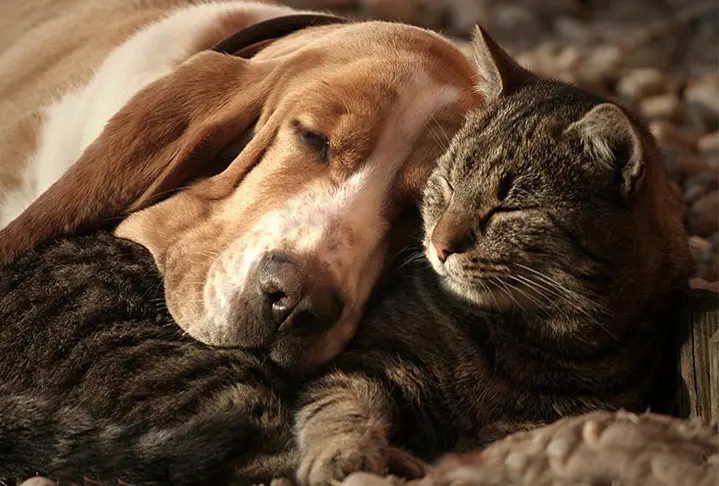What’s the Most Effective Method for Training Multiple Pets at Once?

Introduction
A. Importance of training multiple pets together
Training multiple pets together is important because it helps them learn to behave well together. When pets like dogs or cats learn together, they understand what behaviors are good in a group. This can make them happier and easier to manage at home.
B. Brief overview of challenges
Training more than one pet at once can be tricky. Each pet has its personality and needs. They might get distracted or compete for attention. Understanding these challenges helps us find better ways to train them together effectively.

Understanding Basic Principles of Training Multiple Pets
A. Positive reinforcement techniques
Using positive reinforcement means rewarding your pets when they do something good. For example, giving them a treat or praise when they follow a command. This encourages them to repeat those good behaviors.
B. Consistency in commands and rewards
Consistency means using the same commands and rewards every time you train your pets. If you say “sit” one day and “sit down” the next, it can confuse them. Using consistent words and actions helps them understand what you want.
C. Establishing a routine
Creating a routine means setting regular times for training and sticking to them. Pets learn best when they know what to expect. A routine also helps you stay organized and remember to train them regularly.

Choosing the Right Training Environment
A. Considerations for indoor vs. outdoor training
Deciding whether to train your pets indoors or outdoors depends on several factors. Indoor training offers a controlled environment with fewer distractions, which can help pets focus better on learning commands. Outdoor training allows pets to practice behaviors in different settings, which can be useful for real-life situations like walks or outings.
B. Managing distractions
Distractions can make it harder for pets to concentrate during training. These distractions could be other pets, noises, or even smells. Managing distractions means finding ways to minimize them during training sessions. For example, choosing a quiet room indoors or using a fenced area outdoors can help reduce distractions and make training more effective.
Techniques for Training Multiple Pets Simultaneously
A. Group training sessions
Group training sessions involve teaching multiple pets together. This helps them learn from each other’s behavior and see how to respond to commands as a team. It’s like learning in a class with others.
B. Individual attention within group settings
Even in a group, each pet needs individual attention. This means giving each pet time to practice commands and receive rewards for good behavior. It helps them feel special and motivated to learn.
C. Using visual and auditory cues effectively
Visual cues are signs or gestures that pets learn to recognize as commands, like hand signals for “sit.” Auditory cues are sounds, like a clicker, used to mark good behavior. Using these cues helps pets understand what you want them to do.
Addressing Individual Pet Needs During Group Training
A. Tailoring exercises to each pet’s abilities
Each pet is different, so exercises should match what they can do. Some pets might learn quickly, while others need more time. Tailoring exercises means adjusting them to fit each pet’s skills and pace.
B. Handling competition and hierarchy issues
Pets sometimes compete for attention or try to be the boss. Handling these issues means making sure each pet gets fair treatment during training. It helps to give equal praise and rewards to prevent conflicts.
Overcoming Common Challenges
A. Dealing with conflicts between pets
Pets can sometimes argue or fight during training. Dealing with conflicts means separating them if needed and giving them space to calm down. It’s important to reassure them and avoid situations that might lead to fights.
B. Managing attention span variations
Pets have different abilities to focus. Managing attention span variations means keeping training sessions short and engaging. For pets with shorter attention spans, break tasks into smaller steps. It helps them stay interested and learn better.
Importance of Patience and Persistence
A. Setting realistic goals
Setting realistic goals means choosing tasks that your pets can achieve with practice. For example, teaching them to sit before moving on to more complex commands. It helps build their confidence and keeps training positive.
B. Celebrating progress
Celebrating progress means praising your pets when they learn something new or improve. It can be giving treats, petting them, or using a happy voice. Celebrating progress motivates them to keep trying and makes training fun for everyone.
Conclusion
A. Summary of effective training methods
Effective training methods include positive reinforcement, consistency in commands, and using visual cues. Tailoring exercises to each pet’s abilities and managing distractions are also important. These methods help pets learn together and behave well in groups.
B. Encouragement for pet owners to start training
Starting training early helps pets learn good habits and bond with their owners. It’s never too late to begin training, even if pets are older. With patience and persistence, every pet can learn new things and enjoy the benefits of training.



